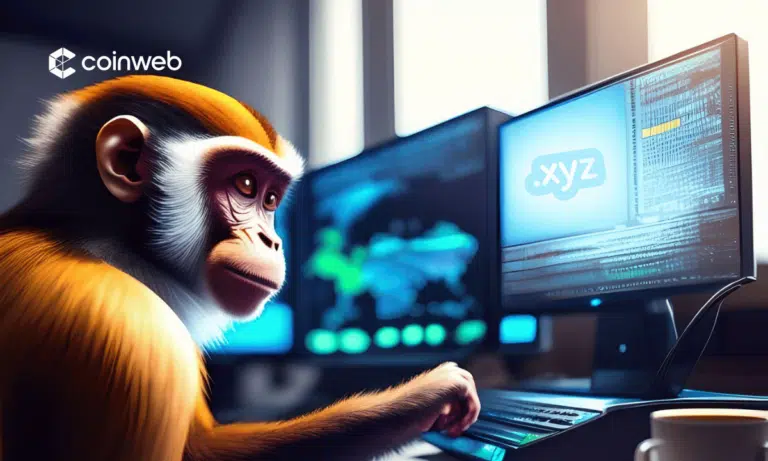Artificial Intelligence and blockchain technology are two of the most powerful forces in innovation today. At their intersection, several groundbreaking projects are contributing to the decentralization movement.
Our team of experts has hand-selected the best AI crypto projects to watch based on innovation, potential use cases, and market strength.
Quick Look: Best AI Crypto Projects
| AI Crypto Project | What It’s Known For |
| The Graph (GRT) | Best in data indexing |
| Injective (INJ) | Best in DeFi innovation |
| IQ Wiki (IQ) | Best in consumer tools |
| Render (RNDR) | Best in democratizing GPU access |
| Oasis Network (ROSE) | Best in ethical AI |
| Bittensor (TAO) | Best in decentralized access to AI models |
| SingularityNET (AGIX) | Best in open-sourcing AGI |
| Internet Computer (ICP) | Best in Web3 app development |
| Near Protocol (NEAR) | Best in transaction processing |
Below, you will find all you need to know about each one, and learn what they have to offer.
1. The Graph (GRT)
Best in data indexing

The Graph enables developers to organize and connect blockchain data to Web3 applications.
It operates as an open-source protocol for data indexing and querying, organizing data from 39 different blockchains into custom subgraphs. These subgraphs are open APIs that allow for a constant stream of data between the blockchain and your app’s UI. There are over 900 user-built subgraphs, each with its own signal cost in GRT, the native platform coin.
You can think of it as the Google of blockchain, powering access to fully indexed data with increased efficiency and minimal downtime. There are now over 60K Web3 platforms running on The Graph, demonstrating strong growth and promise for the future of this project.
Pros
- Makes developing blockchain applications more accessible
- Improves application performance for developers and users
Cons
- Steep learning curve for some developers
- Success is dependent on performance of the decentralized applications
The Graph is the industry leader in data indexing for Web3, showing promise for future growth of GRT.
2. Injective (INJ)
Best in DeFi innovation

Injective is a layer 1 blockchain powering the future of finance with an AI-powered dApp development suite.
Injective has built the first auto-executing smart contracts solution, allowing for faster and more innovative DeFi applications. It also allows for classic coin swaps, margin trading, and futures, seamlessly connecting with other blockchains like Ethereum and Solana to provide interoperability.
Injective employs a Proof of Stake and Byzantine Fault Tolerance mechanism to provide fast and secure transactions, increasing app performance and preventing unethical practices like front-running.
The platform token, INJ, is used to verify transactions and as an incentive for developers. You can purchase INJ if you’re looking to create DeFi apps, or to approve proposals, stake coins, and participate in burn auctions to capitalize on this project.
Pros
- Faster transactions for dApps
- Allows trading across different blockchains
- Helps combat front-running and other unethical practices
Cons
- High competition for projects in the DeFi space
Injective is increasing the speed and security of blockchain transactions, offering an opportunity for developers and investors to profit from INJ.
3. IQ.wiki (IQ)
Best in consumer tools

IQ.wiki is a platform offering extensive product and coin wikis, an AI assistant (IQ GPT), an AI-powered social platform (IQ.social), and an upcoming AI-enabled coding environment (IQ Code).
IQ token is the utility coin powering these platform tools and facilitating governance. It’s managed and backed by BrainDAO, whose treasury includes stablecoins and blue chip NFTs. IQ is available on Ethereum, Binance Smart Chain, Polygon, and EOS, with stakers governing the platform.

We were impressed by the suite of tools IQ.wiki is building. The knowledge base is nicely complemented by a social forum and GPT-4 personal assistant. We’re looking forward to seeing IQ Code when it’s released, which promises to help developers with coding Solidity and Vyper sets.
Pros
- Comprehensive wiki on all coins
- Allows tracking and changes to different blockchains
- AI search model to support users
Cons
- Static page and not the easiest to navigate.
4. Render (RNDR)
Best in democratizing GPU access

Render provides artists and developers with nearly unlimited graphics processing units (GPU) power for rendering, intending to democratize access. This allows artists to affordably scale production, create monetized art, and now also powers artificial intelligence solutions.
With many graphics processing units (GPUs) sitting idle when not in use, and many artists struggling to scale their cloud rendering, Render provides a marketplace to efficiently coordinate supply and demand. This is similar to how processing power has been “rented” out for crypto mining, but now is powering art and machine learning. The platform token, RNDR, is provided as payment for those lending their GPU.
We were particularly impressed by the robust approval system, with features like watermarked previews, batch approvals, automated re-renders of rejected frames, improving both cost and operational efficiency for artists. Render also offers a secure way to monetize creations.
Pros
- Democratizes access to GPU power
- Offers a secure venue for monetization of digital art
- Provides a way to earn RNDR token for typically idle GPUs
Cons
- Requires substantial processing power to participate as a lender
Render is a game-changer in the digital art and graphics industry, as the first network to turn GPU computing into a decentralized network of 3D assets.
5. Oasis Network (ROSE)
Best in ethical AI

Oasis Network is a layer 1 blockchain protocol focused on secure and transparent data sharing in decentralized finance and AI.
This project stood out to us because it gives any user the tools to build an open and secure dApp, prioritizing fairness and maintaining full control over your data.
The Proof of Stake (PoS) mechanisms utilize zero-knowledge proofs and confidential smart contracts to protect sensitive data while allowing apps to be built at a low cost.
Oasis protocol has become integral in developing responsible AI applications, partnering with Meta to build a framework that ensures privacy and fairness as the industry explodes.
Developers use and earn the native token ROSE which serves as the utility token for the Oasis ecosystem.
Pros
- Provides a developer kit for secure dApps
- Contributing to the development of ethical AI
- Prioritizes security, fairness, and transparency
Cons
- High competition in the privacy and data sharing sector
Oasis Network is making huge contributions to secure and open data sharing for decentralized finance and AI.
6. Bittensor (TAO)
Best in decentralized access to AI models

Bittensor is democratizing access to AI solutions through a decentralized, peer to peer marketplace. The mission of many blockchain technology projects is to end the current top-down flow of information and power, and Bittensor is trying to accomplish this for AI.
Founded as a completely decentralized AI company, the Bittensor market acts as a database of machine learning and AI knowledge. When more bright minds have access to ML models, it fosters even faster and more impactful innovation.
This model commoditizes AI, allowing open access to a rapidly growing repository of powerful intelligence. The market operates similarly to other blockchains, awarding TAO to those who provide their cloud computing power and charging TAO for those using the resources and intelligence.
Pros
- Encourages innovation in AI
- Building the infrastructure for bottom-up access to technology
- Opportunity to earn TAO through lending processing power
Cons
- Highly technical product, steep learning curve
Bittensor shows immense promise for revolutionizing access to machine intelligence, fighting the dominance of big tech.
7. SingularityNET (AGIX)
Best in open-sourcing AGI

Similar to Bittensor, SingularityNET is a decentralized, peer to peer marketplace. It provides access to a wide range of AI models to foster collaborative innovation.
Their mission is to open-source the creation of Artificial General Intelligence (AGI), which is the point when AI surpasses human intelligence. Rather than OpenAI and other major players having exclusive control over this powerful technology, this would democratically share it with the public.
SingularityNET allows developers to seamlessly integrate machine learning models into applications, supporting tasks like data indexing, payments, dynamic outsourcing, and an enhanced security system.
This makes it affordable and scalable for developers to build AI applications, with access to shared knowledge and processing power. The objective is to build openly accessible, ethical AI to improve sustainability and bring about beneficial change.
Pros
- Encourages AI innovation through shared knowledge and resources
- Combats the immense centralized power of tech companies
Cons
- Highly technical, requires learning and ramp-up time
SingularityNET is another heavy-hitter in the quickly growing AI space, fostering innovation and democratized access to powerful tech.
8. Internet Computer (ICP)
Best in Web3 app development

The vision for building and storing almost anything on the blockchain is much closer thanks to the work Internet Computer is doing. Their mission is to make blockchain a limitless smart contract cloud, capable of hosting data, digital content, complex algorithms, and user-friendly applications.
The Internet Computer platform allows developers to build tamperproof and engaging Web3 social media, games, VR, DeFi, and enterprise infrastructure.
AI projects are undoubtedly one of the major use cases for this protocol, as it seamlessly bridges multiple chains through “canister software”, the next generation of smart contracts, enabling full-stack decentralization.
The blockchain is essentially transformed into an autonomous, serverless cloud, with processing power lent by other users in exchange for ICP tokens, its native cryptocurrency.
Pros
- Enables the hosting of autonomous, serverless Web3 applications
- Secures its network through ironclad cryptography
Cons
- Technologically intensive
- Requires significant computing power to earn IC
The Internet Computer is making hosting applications on the blockchain more accessible and attractive for developers.
9. Near Protocol (NEAR)
Best in transaction processing

NEAR Protocol is a layer 1 protocol built to enable faster transaction speeds on the blockchain without compromising security and keeping costs low. It allows developers to build scalable, efficient dApps, perfect for the demanding processing needs of crypto AI projects.
This increased efficiency is powered by a unique sharding mechanism, Nightshade, which processes transactions in parallel across multiple chains. Nightshade produces a portion of the next block, called chunks, which allows it to process up to 100,000 transactions per second. This expands the overall capacity of the blockchain while keeping transaction costs low.
NEAR Protocol uses human-readable account names which are more user-friendly than the typical cryptographic wallet addresses. NEAR is also the name of the utility token of the platform, used for processing transactions, running validator nodes on the network through staking, and for governance votes on allocating resources.
The rapid processing speeds and low costs position NEAR as a strong option for building dApps and artificial intelligence solutions that require high performance and scalability.
Pros
- Enables fast transaction speeds
- Low transaction costs
Cons
- Dependent on developers choosing NEAR and making successful apps
NEAR Protocol expands the capacity of the blockchain and can power resource-intensive AI solutions.
How Artificial Intelligence and Blockchain Interact
Artificial Intelligence and blockchain technology are two of the fastest-growing industries in the tech field, but they’re often not fully understood, particularly the ways in which they can interact.
Blockchain has the potential to revolutionize the finance sector, gaming, art, and more broadly, software development and technological innovation. It’s essentially a network that can process transactions and operate as an unlimited serverless cloud, forming a foundation for a massive variety of applications.
Artificial Intelligence can be combined with the power of the blockchain to rapidly build dApps, create AI-powered trading bots, efficiently run ML models, and nearly endless number of use cases. Access to AI is largely controlled by major tech companies like Open AI and Google. But, decentralized marketplaces built on the blockchain are opening up access to AI knowledge and processing power.
What Is the Responsible Data Economy?
To better understand the importance of democratizing access to AI and data as a whole, let’s dive into the concept of the responsible data economy. Data is at the heart of AI, blockchain, and nearly every application we use in our personal and professional lives.
The massive amounts of data now required to keep our world running demand a high degree of accuracy and security when processing it, while ensuring speed and cost efficiency.
The blockchain can provide open access to the value created by data, rather than having it controlled by large corporations. By using the blockchain to store and process the data used in Artificial Intelligence and other applications, we can build a responsible data ecosystem that ensures fairness, privacy, and security.
We retain ownership of our own data, have open-source access to cutting-edge tech, and ensure both the accuracy and security of all data. This allows us to build towards ethical, sustainable, highly innovative artificial intelligence.
Types of AI Crypto Coins and Projects
While there are too many use cases for AI blockchain technology to provide an exhaustive list, there are a few key project types to be aware of.
Crypto tokens can be built on an AI-enabled protocol and traded like any other coins, either purchased outright or attained by crypto miners contributing their computing power to the protocol. Each of the projects on this list has a native cryptocurrency, like GRT or TAO, which you may see available to purchase on an exchange as an investment or if you plan to develop apps on the protocol.
Open finance protocols and applications are also some of the top artificial intelligence use cases for the blockchain. Projects like NEAR have built methods for processing transactions faster while ensuring security and keeping costs low. This allows developers to build better DeFi apps and improves the user experience, creating more demand for open finance and increasing the value of utility tokens.
Data based services are another main category of crypto AI projects. These platforms connect blockchain data to other applications, allowing for easy integration into the user interface and functionality. Some services like The Graph go beyond connection and allow for the indexing and querying of blockchain data, making it far more accessible and useful in software development.
Choosing Crypto AI Projects to Invest In
AI crypto coins may seem daunting, especially if you’re a beginner or not particularly technical, but we’ll break down what to look for before investing.
Innovation & Use Cases
A key factor in the success of AI crypto coins is their utility and proprietary technology. Read the project’s white paper to assess if there are multiple strong use cases for it, and do some research into the problem being solved to see if there are competitors.
Reputation of Founding Team
Before making an investment, it’s a best practice to look into who founded the project and their reputation. If they have an impressive educational background or career history, or better yet have a track record in founding successful companies, it makes it more likely this project will succeed.
Activity and Community
Assess if the AI crypto project already has active users and high trading volume and market cap. If the number of users is growing and the native token has increased in price and performed well over time, you have evidence of a well-established community. This means tokens are more likely to hold their value and continue to grow.
Potential Risks
It’s important to do your own research into any potential investment and be aware of any potential risks. There are always risks entrusting your money and data in an online platform. Security can be compromised even with rigorous measures.
There is also always the risk that the market changes significantly and usage or investment in the project decreases, or that regulations fundamentally change the crypto market in your region.
Competitors and new tech are also popping up every day. You need to keep up with the market and accept that you’re taking a bit of a gamble with very early-stage companies.
FAQs
AI tokens are utility tokens native to a blockchain protocol or platform, that are mined, bought, and sold to help operate the blockchain or as an investment.
A few of the top artificial intelligence tokens are NEAR, ICP, and TAO, based on market cap and use cases for the tech.
While it’s impossible to say for sure which blockchain projects year, a few of the most promising AI coins are ICP, RNDR, and INJ based on user growth and market cap.
You can buy crypto assets from AI based projects on most major exchanges like Coinbase, Binance, or Crypto.com.
When choosing crypto projects, read the white paper to understand the tech behind it, look into the reputation of the founding team, and assess the current market cap and growth in users.






